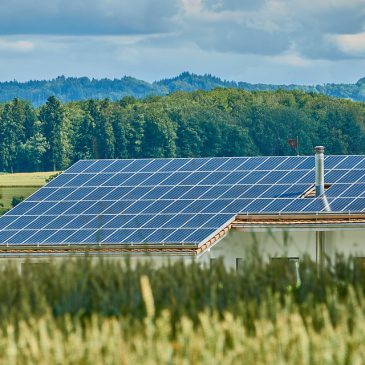The Best Ways to Pay for Residential Solar
One of the most challenging things about preparing yourself to go solar, is sorting through all the options you have when it comes to paying for your solar panels, solar storage, and everything else that comes along with a solar power generation system. Weighing the options when it comes to paying for residential solar power can be confusing, but it is worth careful consideration.
After all, solar power isn’t cheap. Though your new solar power system will eventually pay for itself several times over the next couple of decades, finding the best (and least expensive) way to pay for it will only increase your savings and get you to realizing those savings all that much faster.
So, in this brief guide on paying for residential solar, we’ll look at several of the contemporary financing options for solar panels, and provide you with enough information to get you on your way to making the best decision for your situation and your budget.
Paying for a Solar Power System Outright or Financing It
It bears mentioning that the best way to pay for just about anything is still to simply pay for it up front. But if you don’t have the average price of a solar power system (~$15,000 to $30,000) laying around waiting for you to invest it in the future of your home and the planet, then you’ll need to figure out some other way to pay for it first.
For those who can’t afford to just go buy solar panels and everything else (not to mention the cost of installation and connecting your system to your home and the grid), the financing options are generally divided into two categories. These include leasing a solar system, and taking out a loan to pay for it.
Loans are pretty straightforward; you borrow money from a lending institution, either as an additional mortgage against the equity on your home or based on your credit, and make monthly payments until you own the system outright. The other options can be a bit more complicated, albeit easier on the pocketbook. But they also include the least amount of potential to net the homeowner a windfall in property value or energy savings.
The Solar Lease and Power Purchase Agreements (PPAs)
Solar leases and PPAs are very similar. Under each option, the solar company pays for the system and the installation, and continues to own it for the duration of its life on your roof.
Under both schemes, you pay a monthly fee. The key difference is that with a solar lease, you pay a fixed amount per month regardless of how much power the system generates. With a PPA, you pay a fixed amount for every kilowatt hour (kWh) the system produces.
So which is the better option? The answer to that question depends on where you live and your local laws and utility company options. Sorting it all out requires a great deal of research and understanding of how the pieces fit together to make a whole.
Because of this, it is often best to set up a consultation with a solar installer or other expert to examine what options are available and the costs and benefits of each.
How to Choose the Best Solar Financing Option for You
There are obvious benefits and drawbacks to each type of solar financing. Purchasing a system outright is the least expensive option that still provides a way to recoup your investment in both savings and home value.
Loans, while considerably more expensive than, leases and PPAs, at least allow you to recoup some of your investment when everything is said and done. With leases and PPAs, the bar to entry is the lowest, but you never actually own the system.

